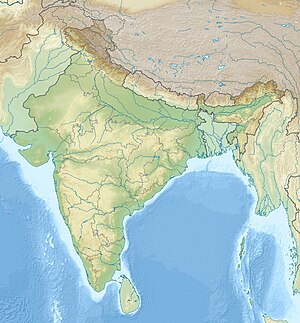| Bhutesvara Yakshis | |
|---|---|
 Bhutesvara Yakshis, Mathura, 2nd century CE. The Buddhist reliefs of the back of the pillars are visible in the mirror behind. Indian Museum, Kolkata.  The Bhutesvara Yakshis in the Mathura Museum. | |
| Material | Red sandstone |
| Period/culture | 2nd century CE |
| Discovered | 27°36′00″N 77°39′00″E / 27.60000°N 77.65000°E |
| Place | Mathura, India. |
| Present location | Indian Museum, Kolkata, India. Also Mathura Museum, Mathura |

The Bhutesvara Yakshis, also spelled Bhutesar Yakshis, are a series of yakshi reliefs on a railing, dating to the 2nd century CE during the time of the Kushan Empire.[1] The reliefs were found in the Bhuteshwar mound, around the remains of a Buddhist stupa, outside Mathura, and are now located in the Indian Museum in Kolkata,[2] with three pillars, and three more pillars and one fragment (half of a pillar) in the Mathura Museum. They are an important example of Mathura art, of which these and other yakshi figures are "perhaps the best known examples".[3]
The backs of the pillars contain reliefs with scenes from the life of the Buddha, and from Jataka tales about his previous lives.
The Bhutesar mound is one of a row of large mounds originally just outside the city of Mathura, but now well within the modern city. The important, mostly Jain, site of Kankali Tila was two mounds down.[4]
- ^ History and the Present, Partha Chatterjee, Anjan Ghosh Anthem Press, 2006 p. 7
- ^ The Culture of India, Kuiper, Kathleen, Britannica Educational Publishing, 2010 p. 209
- ^ Harle, 60
- ^ Archaeological Survey of India, Vol. XVII, Alexander Cunningham, pp. 110-111
